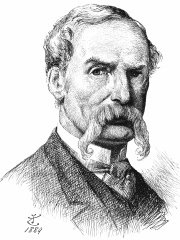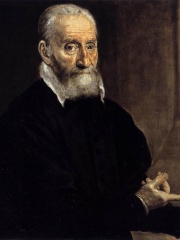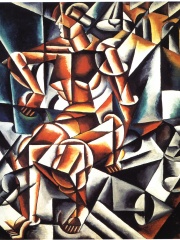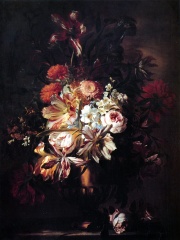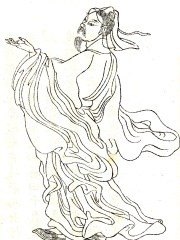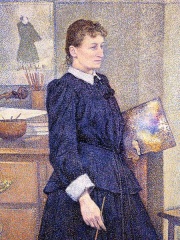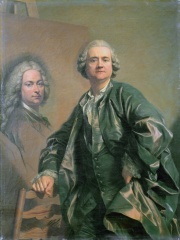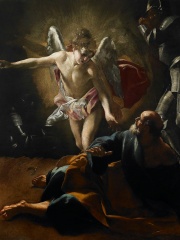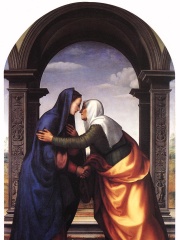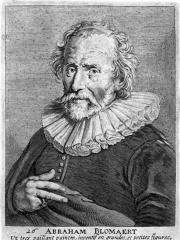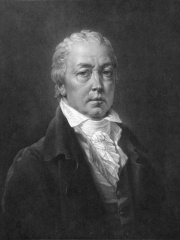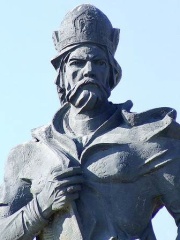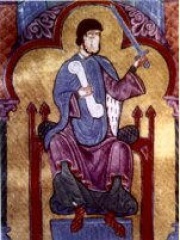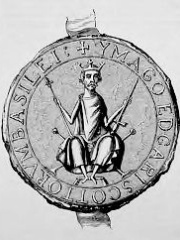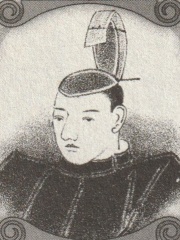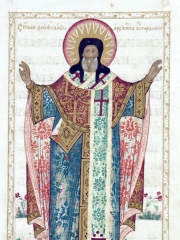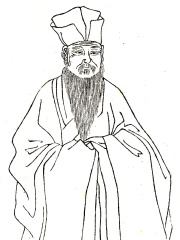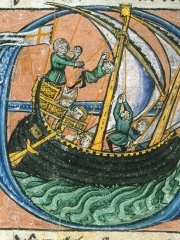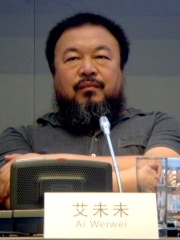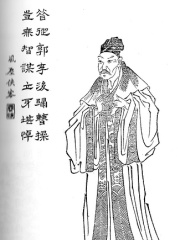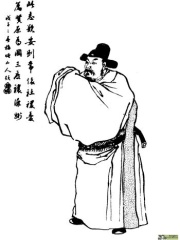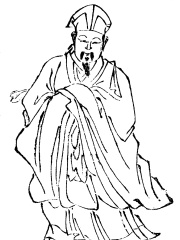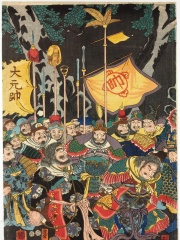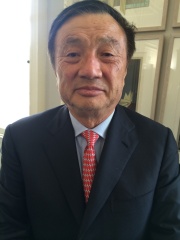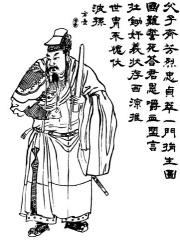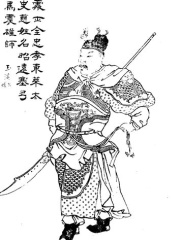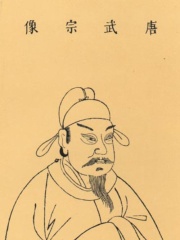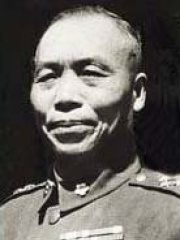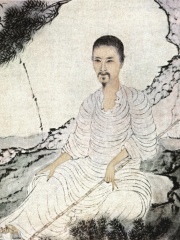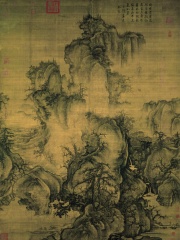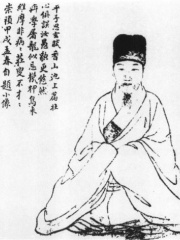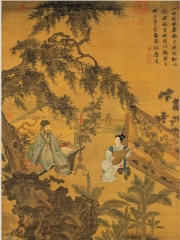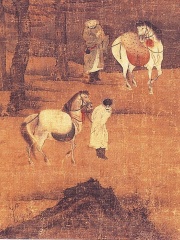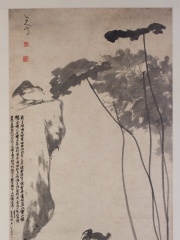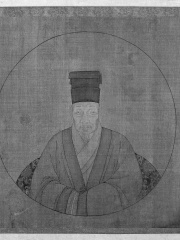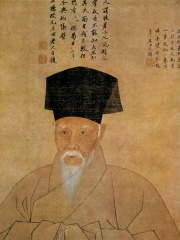PAINTER
Mi Fu
1051 - 1107
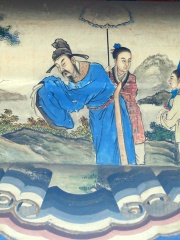
 Mi Fu
Mi Fu
Mi Fu (Chinese: 米芾; 1051–1107) was a Chinese painter, poet, calligrapher and art theorist of the early Song dynasty. Born in Taiyuan, he was known for his landscape painting technique, later referred to as "Mi Dots", which involved the use of broad, wet ink dots applied with a flat brush. Mi Fu's poetry was influenced by Li Bai, while his calligraphy drew inspiration from Wang Xizhi. Mi Fu is commonly identified in art historical scholarship by art historians as one of the four major calligraphers of the Song Dynasty, along with Su Shi, Huang Tingjian and Cai Xiang. Read more on Wikipedia
His biography is available in 32 different languages on Wikipedia. Mi Fu is the 471st most popular painter (up from 523rd in 2024), the 338th most popular biography from China (up from 399th in 2019) and the 3rd most popular Chinese Painter.
Memorability Metrics
Page views of Mi Fu by language
Among PAINTERS
Among painters, Mi Fu ranks 471 out of 2,023. Before him are John Tenniel, Giulio Clovio, Lyubov Popova, Abraham Brueghel, Gu Kaizhi, and Anna Boch. After him are Louis-Michel van Loo, Giovanni Lanfranco, Mariotto Albertinelli, Richard Serra, Abraham Bloemaert, and Heinrich Füger.
Most Popular Painters in Wikipedia
Go to all RankingsJohn Tenniel
1820 - 1914
HPI: 66.66
Rank: 465
Giulio Clovio
1498 - 1578
HPI: 66.62
Rank: 466
Lyubov Popova
1889 - 1924
HPI: 66.60
Rank: 467
Abraham Brueghel
1631 - 1690
HPI: 66.60
Rank: 468
Gu Kaizhi
345 - 406
HPI: 66.60
Rank: 469
Anna Boch
1848 - 1936
HPI: 66.59
Rank: 470
Mi Fu
1051 - 1107
HPI: 66.57
Rank: 471
Louis-Michel van Loo
1707 - 1771
HPI: 66.54
Rank: 472
Giovanni Lanfranco
1582 - 1647
HPI: 66.51
Rank: 473
Mariotto Albertinelli
1474 - 1515
HPI: 66.51
Rank: 474
Richard Serra
1939 - 2024
HPI: 66.51
Rank: 475
Abraham Bloemaert
1566 - 1651
HPI: 66.51
Rank: 476
Heinrich Füger
1751 - 1818
HPI: 66.50
Rank: 477
Contemporaries
Among people born in 1051, Mi Fu ranks 3. Before him are Edgar Ætheling, and Bertha of Savoy. Among people deceased in 1107, Mi Fu ranks 2. Before him is Kilij Arslan I. After him are Raymond of Burgundy, Edgar, King of Scotland, Emperor Horikawa, Theophylact of Ohrid, Cheng Yi, Dagobert of Pisa, and Jayavarman VI.
Others Born in 1051
Go to all RankingsEdgar Ætheling
NOBLEMAN
1051 - 1200
HPI: 76.44
Rank: 1
Bertha of Savoy
POLITICIAN
1051 - 1087
HPI: 67.01
Rank: 2
Mi Fu
PAINTER
1051 - 1107
HPI: 66.57
Rank: 3
Others Deceased in 1107
Go to all RankingsKilij Arslan I
POLITICIAN
1079 - 1107
HPI: 71.92
Rank: 1
Mi Fu
PAINTER
1051 - 1107
HPI: 66.57
Rank: 2
Raymond of Burgundy
POLITICIAN
1070 - 1107
HPI: 65.31
Rank: 3
Edgar, King of Scotland
POLITICIAN
1074 - 1107
HPI: 63.98
Rank: 4
Emperor Horikawa
POLITICIAN
1079 - 1107
HPI: 63.43
Rank: 5
Theophylact of Ohrid
WRITER
1055 - 1107
HPI: 63.33
Rank: 6
Cheng Yi
PHILOSOPHER
1033 - 1107
HPI: 62.98
Rank: 7
Dagobert of Pisa
RELIGIOUS FIGURE
1100 - 1107
HPI: 61.22
Rank: 8
Jayavarman VI
NOBLEMAN
1100 - 1107
HPI: 58.64
Rank: 9
In China
Among people born in China, Mi Fu ranks 338 out of 1,610. Before him are Ai Weiwei (1957), Jia Xu (147), He Jin (135), Xun Yu (163), Gu Kaizhi (345), and Gao Shun (200). After him are Ren Zhengfei (1944), Ma Teng (156), Ruzi Ying (5), Taishi Ci (166), Emperor Wuzong of Tang (814), and Li Zongren (1890).
Others born in China
Go to all RankingsAi Weiwei
ARTIST
1957 - Present
HPI: 66.63
Rank: 332
Jia Xu
POLITICIAN
147 - 223
HPI: 66.63
Rank: 333
He Jin
MILITARY PERSONNEL
135 - 189
HPI: 66.61
Rank: 334
Xun Yu
POLITICIAN
163 - 212
HPI: 66.60
Rank: 335
Gu Kaizhi
PAINTER
345 - 406
HPI: 66.60
Rank: 336
Gao Shun
MILITARY PERSONNEL
200 - 199
HPI: 66.59
Rank: 337
Mi Fu
PAINTER
1051 - 1107
HPI: 66.57
Rank: 338
Ren Zhengfei
BUSINESSPERSON
1944 - Present
HPI: 66.56
Rank: 339
Ma Teng
POLITICIAN
156 - 212
HPI: 66.44
Rank: 340
Ruzi Ying
POLITICIAN
5 - 25
HPI: 66.44
Rank: 341
Taishi Ci
POLITICIAN
166 - 206
HPI: 66.43
Rank: 342
Emperor Wuzong of Tang
POLITICIAN
814 - 846
HPI: 66.39
Rank: 343
Li Zongren
POLITICIAN
1890 - 1969
HPI: 66.38
Rank: 344
Among PAINTERS In China
Among painters born in China, Mi Fu ranks 3. Before him are Shitao (1642), and Gu Kaizhi (345). After him are Guo Xi (1020), Qi Baishi (1864), Han Gan (706), Dong Qichang (1555), Tang Yin (1470), Liang Kai (1200), Bada Shanren (1626), Wen Zhengming (1470), and Shen Zhou (1427).
Shitao
1642 - 1707
HPI: 69.32
Rank: 1
Gu Kaizhi
345 - 406
HPI: 66.60
Rank: 2
Mi Fu
1051 - 1107
HPI: 66.57
Rank: 3
Guo Xi
1020 - 1090
HPI: 66.28
Rank: 4
Qi Baishi
1864 - 1957
HPI: 65.83
Rank: 5
Han Gan
706 - 783
HPI: 63.87
Rank: 6
Dong Qichang
1555 - 1636
HPI: 63.84
Rank: 7
Tang Yin
1470 - 1524
HPI: 63.33
Rank: 8
Liang Kai
1200 - 1300
HPI: 63.31
Rank: 9
Bada Shanren
1626 - 1705
HPI: 63.17
Rank: 10
Wen Zhengming
1470 - 1559
HPI: 63.11
Rank: 11
Shen Zhou
1427 - 1509
HPI: 63.08
Rank: 12
